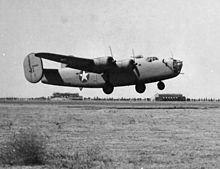415th Flight Test Flight  | |
|---|---|
 A maintenance contractor performs final checks to a 415th Flight Test Flight T-38 Talon prior to taking off from Joint Base San Antonio-Randolph. [a] | |
| Active | 1942–1945; 1958–1962; 1989–1994; 2001–present |
| Country | |
| Branch | |
| Role | Flight Test |
| Part of | Air Force Reserve Command |
| Garrison/HQ | Joint Base San Antonio-Randolph, Texas |
| Engagements | Mediterranean Theater of Operations |
| Decorations | Distinguished Unit Citation Air Force Outstanding Unit Award |
| Insignia | |
| 415th Flight Test Flight emblem [b] [1] |  |
| Unofficial World War II 415th Bombardment Squadron emblem [2] |  |
| Aircraft flown | |
| Trainer | Northrop T-38 Talon |
The 415th Flight Test Flight is a United States Air Force reserve unit. It is assigned to the 413th Flight Test Group of Air Force Reserve Command, stationed at Joint Base San Antonio-Randolph, Texas.
Contents
- Mission
- History
- World War II
- Strategic Air Command
- Flight test
- Lineage
- Assignments
- Stations
- Aircraft
- Awards and campaigns
- See also
- References
- Bibliography
The squadron was first activated during World War II as the 25th Reconnaissance Squadron. After redesignation as the 415th Bombardment Squadron, it saw combat in the Mediterranean Theater of Operations, participating in the low level attack on oil refineries near Ploiești, Romania. It earned two Distinguished Unit Citations for its combat operations. After VE Day the squadron returned to the United States and trained with Boeing B-29 Superfortresses until inactivating in Spring 1946.
The squadron was reactivated in 1958 when Strategic Air Command (SAC) reorganized its Boeing B-47 Stratojet wings and placed one third of its bombers on ground alert. It was inactivated in 1962, when SAC's alert status was altered.
In 1994, the squadron was consolidated with the 6515th Test Squadron, which had been performing flight tests on McDonnell Douglas F-15 Eagle aircraft at Edwards Air Force Base, California, since 1989. It was inactivated in 1994, but in 2001 was activated in the reserve to perform flight tests on trainer aircraft.



